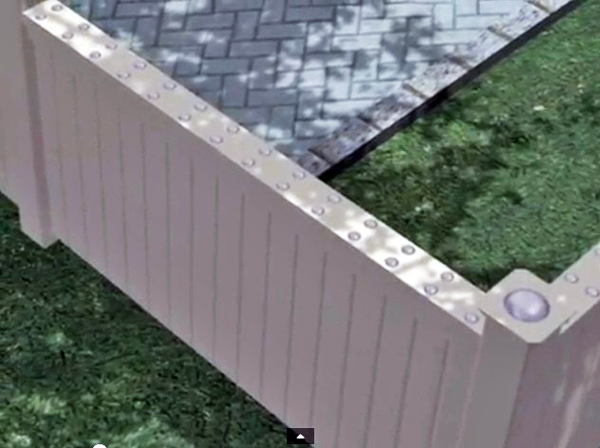A fence that protects your property and the environment? Seems we just covered a piece of an innovative engineering called Energy Fence (aka Thermosolar fence) which makes use of the solar, air source, and ground source, to produce energy via a heat pump, and now there is this… S.A.F.E fencing system that combines the functionality of a perimeter fencing with a unique solar panel system built right into the fence’s upper shell.
S.A.F.E. stands for Solar Alternative Functioning Energy. Conceived by engineers at EarthSure, this unique patent pending invention is made out of recycled PVC and works in the following way: as the sun rises and sets, the sunlight is collected by a series of optical lenses that transmit the light to solar panels which is then transformed into free, clean, renewable energy. This energy is further inverted into the electric meter of the home or office building. In short, everything works just like it would if your solar panels were on the roof, except here, they are inconspicuously built straight into the fence itself.
Just like any other renewable energy source this system can reduce your electric bill and helps eliminate dependence on carbon based fuels.
EarthSure claims “The cost of the fence and installation will pay for itself in time. In addition, purchase and installation of the system can be subsidized by the government anywhere from 30% and up to 50% in some states. Solar energy users can also receive RECs (renewable energy credits) based on how much energy it produces at that location.”
In general, this concept makes sense, and I suppose folks that feel their solar panels on the roof affect their home’s curb appeal might be happy with the fact that the fence is actually quite an attractive unit. Realistically though, until the company reveals the actual power that this fence can generate and the time span that it can pay for itself I can only second a commentator on Youtube: “Cute idea, clueless on the engineering!”




 Concrete: How “Green” is it and What are the Alternatives?
Concrete: How “Green” is it and What are the Alternatives? The Real Deal Behind Green Home Certifications
The Real Deal Behind Green Home Certifications How to Save Energy With Radiant Floor Heating
How to Save Energy With Radiant Floor Heating
Like the solar fence concept; not currently buying one.
Good idea, but needs more work. The panels and lines must be connector agnostic, panels should be simple to replace, and each panel operate independently if part of the connection fails. In the current design, what if a tree falls on the fence or someone tears part of the fence down to put in a gate?